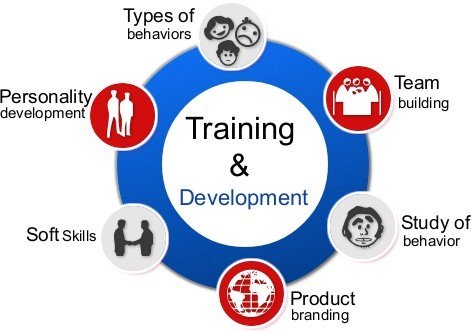Training and development is vital part of the human resource development. It is assuming ever important role in wake of the advancement of technology which has resulted in ever increasing competition, rise in customer’s expectation of quality and service and a subsequent need to lower costs. It is also become more important globally in order to prepare workers for new jobs. In the current write up, we will focus more on the emerging need of training and development, its implications upon individuals and the employers.

Noted management author Peter Drucker said that the fastest growing industry would be training and development as a result of replacement of industrial workers with knowledge workers. In United States, for example, according to one estimate technology is de-skilling 75 % of the population. This is true for the developing nations and for those who are on the threshold of development. In Japan for example, with increasing number of women joining traditionally male jobs, training is required not only to impart necessary job skills but also for preparing them for the physically demanding jobs. They are trained in everything from sexual harassment policies to the necessary job skills.
Need for Training and Development
Before we say that technology is responsible for increased need of training inputs to employees, it is important to understand that there are other factors too that contribute to the latter. Training is also necessary for the individual development and progress of the employee, which motivates him to work for a certain organisation apart from just money. We also require training update employees of the market trends, the change in the employment policies and other things.
The following are the two biggest factors that contribute to the increased need to training and development in organisations:
Change: The word change encapsulates almost everything. It is one of the biggest factors that contribute to the need of training and development. There is in fact a direct relationship between the two. Change leads to the need for training and development and training and development leads to individual and organisational change, and the cycle goes on and on. More specifically it is the technology that is driving the need; changing the way how businesses function, compete and deliver.
Development: It is again one the strong reasons for training and development becoming all the more important. Money is not the sole motivator at work and this is especially very true for the 21st century. People who work with organisations seek more than just employment out of their work; they look at holistic development of self. Spirituality and self awareness for example are gaining momentum world over. People seek happiness at jobs which may not be possible unless an individual is aware of the self. At ford, for example, an individual can enrol himself / herself in a course on ‘self awareness’, which apparently seems inconsequential to ones performance at work but contributes to the spiritual well being of an individual which is all the more important.
The critical question however remains the implications and the contribution of training and development to the bottom line of organisations performance. To assume a leadership position in the market space, an organisation will need to emphasise on the kind of programs they use to improvise performance and productivity and not just how much they simply spend on learning.
Nature of Training
- Training is a must in every organization. The alternative to systematic training is training through ‘trial and error’, which is more costly, time-consuming and nerve-raking.
- Expenditure on training is not an expense but an investment in human resource development. It yields attractive returns in the form of higher productivity and employee satisfaction.
- Training has become more important these days because of rapid changes in technologies, environment, working ways, and employees’ aspirations from their jobs, and management styles. Further, effective training can result in increased competitiveness of the organization, and greater employee satisfaction and career development.
- Training matches individual’s abilities with job and organizational requirements. It turns new employees into productive insiders, contributing their best efforts towards higher productivity and profitability, quicker organizational growth and change.
- Training involves learning and learning follows a learning curve. It takes place in bursts and plateaus. In the beginning trainees take time to pick up, then pick up learning with zeal and then plateau (relax) for sometime, and then sees a sudden spurt and again a plateau and sudden spurt.
Scope of training:
The scope of training depends upon the categories of employees to be trained. As we all know that training is a continuous process and not only needed for the newly selected personnel but also for the existing personnel at all levels of the organisation.
Prof. Yoder listed the following five groups of employees who need continuous training:
- Rank And File: employees who have no administrative or supervising work.
- Supervisory Employees:, the first line foreman, supervisor and their immediate supervisors.
- Staff: specialised personnel such as technical and professional persons attached to the line organisation as advisors.
- Middle Management: all the managerial personnel holding positions between line supervisors and the top management.
- Top Executives: all executives who hold major responsibility for the overall planning and control.
One thought on “Training & Development, Need, Nature, Scope”